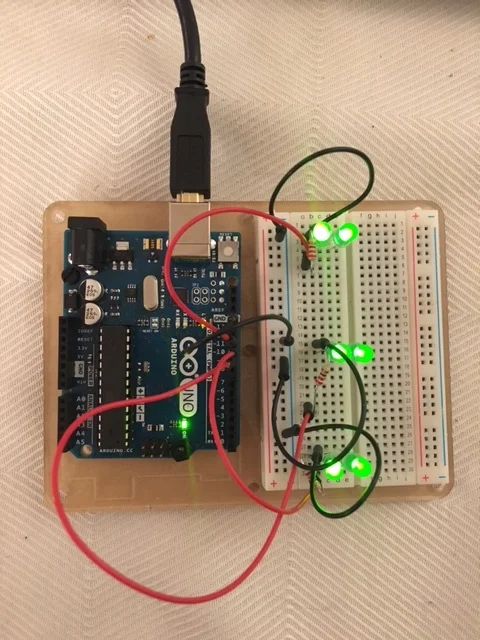prototyping studio reflection
overall reflection
Before coming to this class, my experience in prototyping lived in the world of service design - how do we shift from a full-on pilot for a government-supported program to a small-scale, low-investment, low-expectation 'prototype'? Our class this quarter, however, taught me a breadth of different tools and programs that could help me make tangible prototypes in the digital realm.
Overall, I find prototyping one of the core skills a designer has to portray in the professional world. It helps with communication immensely, and creates buy-in with different groups of people. The making, however, is just as important as the thinking part of it - and the latter part was kind of missing in our class. I wish we had more discussions around outcomes-oriented prototyping, why we did something the way we did, and had more critical conversations around making and critiquing.
Moving forward, I want to focus more on video (testing our Premiere) and motion prototyping (diving deeper into Principle and Framer). The reason why I would like to focus on these core competencies more is the general move from experience designers (and potentially visual designers too?) to also think about the interaction - which is motion - of the product.
learning
challenges
I found both the 3D prototyping quite difficult to grasp. To be frank, we weren't really taught how to think about 3D, and I think that would be critical for other classes moving forward. Translating this into my future work, I would certainly think about how entering a shared mental model in designing / prototyping something could help accelerate learning or discussions.
I also found not having outcomes-driven prototyping to be quite challenging, at least for the first few weeks. Coming from a strategy-oriented background, although we never have a clear image of the future-state in mind, we always find it helpful to have some sort of picture of what we are trying to accomplish. There are certain assignments that I did not find this to be particular needed - like Arduino or 3D projects that is just to experiment and play around - but for web + mobile and video prototyping, for example, that would have been helpful for our learning process. Through this, I would add in additional activities to better plan for my future prototypes. Additionally, I also believe that this would make us more creative.
value of other activities
I believe our class found Nick's help during our Arduino sessions to be most helpful. He had a great way of encouraging learning that is experimental but also informative. He also not only taught you how to do something, but created a mental model of how to approach it.
Link: https://vimeo.com/208135274
accomplishments
final project
I had a lot of fun playing around with the last project. I wanted to have a mobile prototype to show in my portfolio that spoke to who I was as a person (and potentially as a designer) and working on this Death & Co. app was the perfect in-between.
I spent the majority of my time in figuring out a look and feel that is balanced with their brand and also create features that would help facilitate learning. For both counts, I believe I have landed on a good spot and can now run through more testing. What I did not have time to do, however, included more user testing and an interaction flow. In particular for the interaction flow, I believe that it would help me in creating the overall navigation of the app with more confidence. Although I drew it out in paper and iterated on it a few times, a full picture is always better than sketches before implementation. I wish I had a bit more time and moved that earlier in my process. But for a 1-week project, I am quite happy with it!
contribution
I had a really great time working with Olivia, Shravya, and Maggie on our behavorial prototype project. It was a very creative project (on how to "trick" our unsuspecting users) for a very interesting task. I have found that, overall, in working in teams, I often contribute in thinking critically at our decision points. I don't believe that I have the most creative ideas, but I generally am really good at testing them. We moved to a head-based prototype mostly because I had mentioned that other forms of testing may not work well for this test. Shravya then had a brilliant idea of creating a powerpoint to "track" our users based on this. This bouncing of ideas is what made our project and also the dynamic I always try to seek (or curate) whenever I work in groups.
All of our other assignments were individual-based (except for the final one but I decided to work alone for that), so it is hard for me to comment on the other projects.
